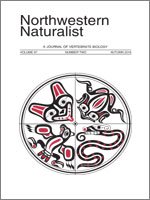The White-footed Vole (Arborimus albipes) is one of the least-studied small mammals in North America. Most reported occurrence data come from incidental captures from larger trapping efforts and have demonstrated a strong affinity for Red Alder (Alnus rubra) trees. Recent research represented a range expansion in western Oregon, but little is known about the species at the southern end of its range in California. We developed a distribution model for the species to identify areas best targeted for additional White-footed Vole research. We used this model to survey by trapping in Humboldt and Del Norte Counties, California, and documented 3 new occurrences for the species. These 3 occurrences were incorporated into a final distribution model. This model suggests the possibility of White-footed Vole occurrence in southern Humboldt and northern Mendocino Counties, which would represent a southern expansion of their range. White-footed Voles were captured in areas with smaller alders than non-capture areas, supporting work from Oregon that suggests the species may not be tied to older stands as had been previously reported. Targeted trapping and physiological studies could clarify the environmental niche of this vole.
How to translate text using browser tools
10 August 2016
A Suitability Model for White-Footed Voles with Insights into Habitat Associations at the Southern Boundary of Their Range
William T Bean,
David Tange
ACCESS THE FULL ARTICLE

Northwestern Naturalist
Vol. 97 • No. 2
Autumn 2016
Vol. 97 • No. 2
Autumn 2016
Arborimus albipes
Del Norte County
Humboldt County
MaxEnt
niche limits
species distribution model
White-footed Vole




